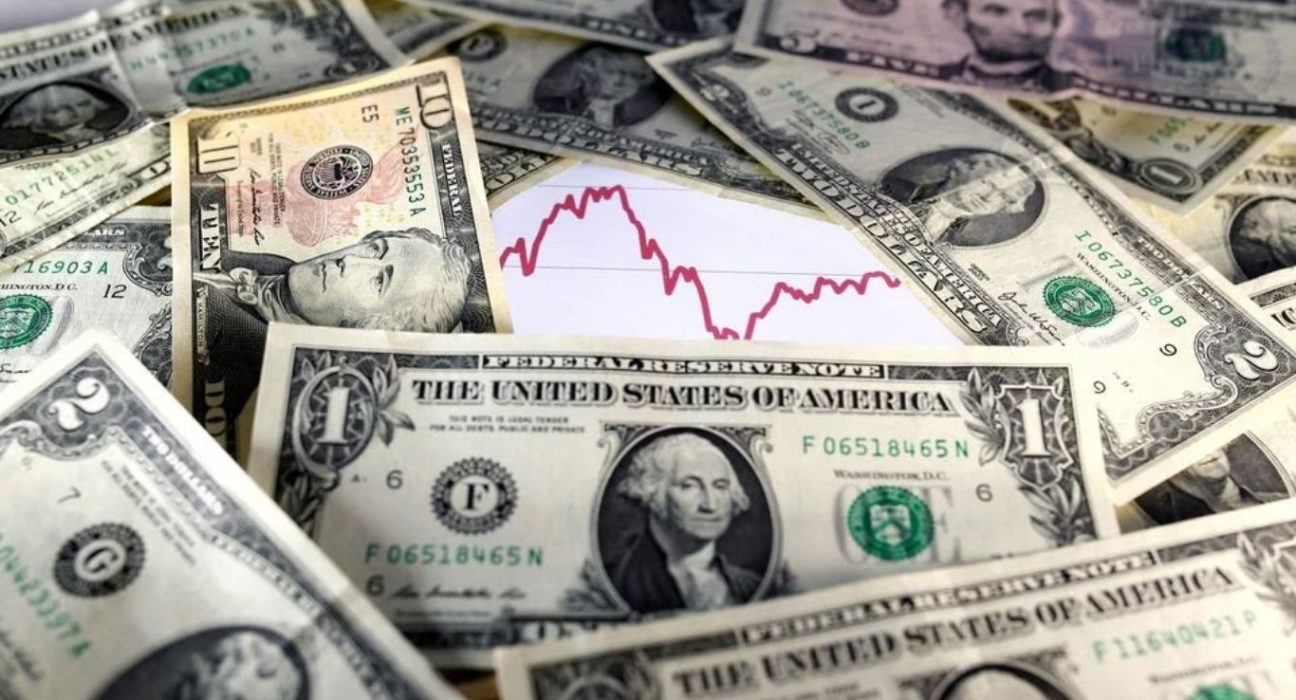The Dollar Index is a market index that measures the value of the U.S. dollar relative to a basket of six other currencies. These are: the Euro, Swiss franc, Japanese yen, Canadian dollar, British pound, and Swedish krona. The index was established by the U.S. Federal Reserve in 1973 after the end of the Bretton Woods Agreement, which linked the value of the dollar to gold. The index is now maintained by ICE Data Indices, a subsidiary of the Intercontinental Exchange (ICE).
The Dollar Index is used to gauge the strength or weakness of the dollar in global markets. A higher index value means that the dollar is stronger against the basket of currencies, and vice versa. The index is calculated by using a weighted geometric mean of the exchange rates of the six currencies. The Euro has the largest weight in the index, at 57.6%, followed by the Japanese yen (13.6%), British pound (11.9%), Canadian dollar (9.1%), Swedish krona (4.2%), and Swiss franc (3.6%).
How did the Dollar Index perform on October 30, 2022?
On October 30, 2022, the Dollar Index traded 0.4% higher at 101.640, after dropping around 0.3% the previous session. This means that the dollar gained value against most of its major counterparts on that day.
One of the factors that influenced the rise of the dollar was the expectation of a rate hike by the Federal Reserve in November 2022. The Fed had signaled that it would start tapering its bond-buying program in November and raise its benchmark interest rate by 0.25% in December, as a response to rising inflation and robust economic growth in the U.S.
Another factor that boosted the dollar was the uncertainty over the outcome of the COP26 climate summit in Glasgow, Scotland, which started on October 31 and lasted until November 12. The summit aimed to reach a global agreement on reducing greenhouse gas emissions and limiting global warming to 1.5 degrees Celsius above pre-industrial levels. However, there were disagreements among major economies such as China, India, and the U.S. over their commitments and responsibilities for tackling climate change.
The dollar also benefited from its safe-haven status amid geopolitical tensions in various regions of the world, such as Taiwan, Ukraine, and Ethiopia. The dollar tends to appreciate when investors seek safety and stability in times of turmoil and risk aversion.
What are some implications of a rising Dollar Index?
A rising Dollar Index has both positive and negative implications for different sectors and actors in the global economy.
On one hand, a stronger dollar makes U.S. exports more expensive and less competitive in foreign markets, which could hurt U.S. manufacturers and exporters. It also reduces the value of foreign earnings and assets for U.S. multinational companies when they are converted back to dollars.
On the other hand, a stronger dollar makes imports cheaper and more affordable for U.S. consumers and businesses, which could lower inflationary pressures and boost domestic demand. It also increases the purchasing power of U.S. travelers and investors abroad.
A rising Dollar Index also affects other countries that have their currencies pegged or linked to the dollar, such as China, Hong Kong, Saudi Arabia, and many others. These countries have to adjust their monetary policies accordingly to maintain their exchange rate regimes with the dollar.
A stronger dollar also impacts commodity prices, which are mostly denominated in dollars. A higher dollar makes commodities more expensive for buyers who use other currencies, which could reduce demand and lower prices for commodities such as oil, gold, copper, etc.
Conclusion
The Dollar Index is an important indicator of the relative value of the U.S. dollar against a basket of six other currencies. It reflects various economic and political factors that affect the supply and demand for different currencies in global markets.
On October 30, 2022, the Dollar Index rose by 0.4% to 101.640, as the dollar gained strength against most of its peers due to expectations of a Fed rate hike, uncertainty over the COP26 summit, and geopolitical risks.
A rising Dollar Index has mixed implications for different sectors and actors in the global economy, depending on their exposure and sensitivity to exchange rate fluctuations.










